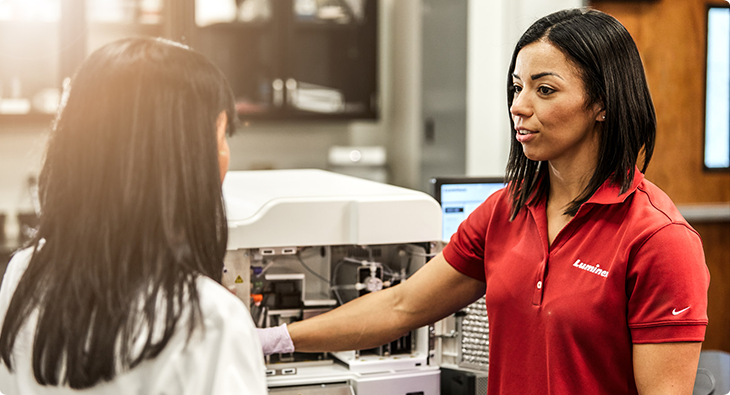Whether you’re a new or experienced xMAP® Technology user, our Technical Support Team can help you! They’ve compiled five tips based on questions that users frequently ask.

Tip #1: Frustrated by verification failure?
Some MAGPIX® verification failures are the result of debris on the chamber or clogs in the sample probe and in the sample lines. As the composition of the debris is generally unknown, running the Enhanced Startup routine twice—once with 0.1N NaOH for the Sanitize and Clean commands, and again with 20% bleach—will generally clear up minor debris and clogs. Still not fixed? The degree of clog can be determined by reviewing the Calibration/Verification Report and Support Utility.
Tip #2: Getting an error code?
The most common instrument code is 800C9580. This is a system code, not an error code, and will accompany both MAGPIX® and LXR (Luminex® 200™ and FLEXMAP 3D®) error codes. MAGPIX error codes resemble 2091[XXXX] and 2XXX; LXR codes will begin with “0x-“. If you receive this code, check the System Log or contact Luminex Customer Support with the support utility file to determine the actual error.
Tip #3: Looking for proteins to develop your own assay?
In addition to the xMAP® Kit Finder and the xMAP Cookbook, Linscott’s Directory is a great resource, with over 2,100,000 unique antibody listings and 1,000,000 other immunological and biological reagents.
Tip #4: Does your quantitative protein assay lack sensitivity?
Try increasing the primary incubation. Primary incubation times to test are one hour, two hours, and overnight. One and two hour incubations can be performed at room temp while shaking. Overnight incubations should be performed while refrigerated and shaking.
Tip #5: Want stellar protein coupling?
Before coupling proteins (including antibodies) to beads, verify the protein concentration via NanoDrop™, bicinchoninic acid (BCA) assay, or Bradford assay. While we don’t suggest a specific concentration, it’s always best to verify the protein concentration that’s on the label or in the certificate of analysis, as they aren’t always correct.
Take a look at our Customer Center, where you’ll find contact information, product documents, target values and Certificates of Quality, training resources, and more.
Have a question and don’t know where to start? View this flyer to see how we can help.
